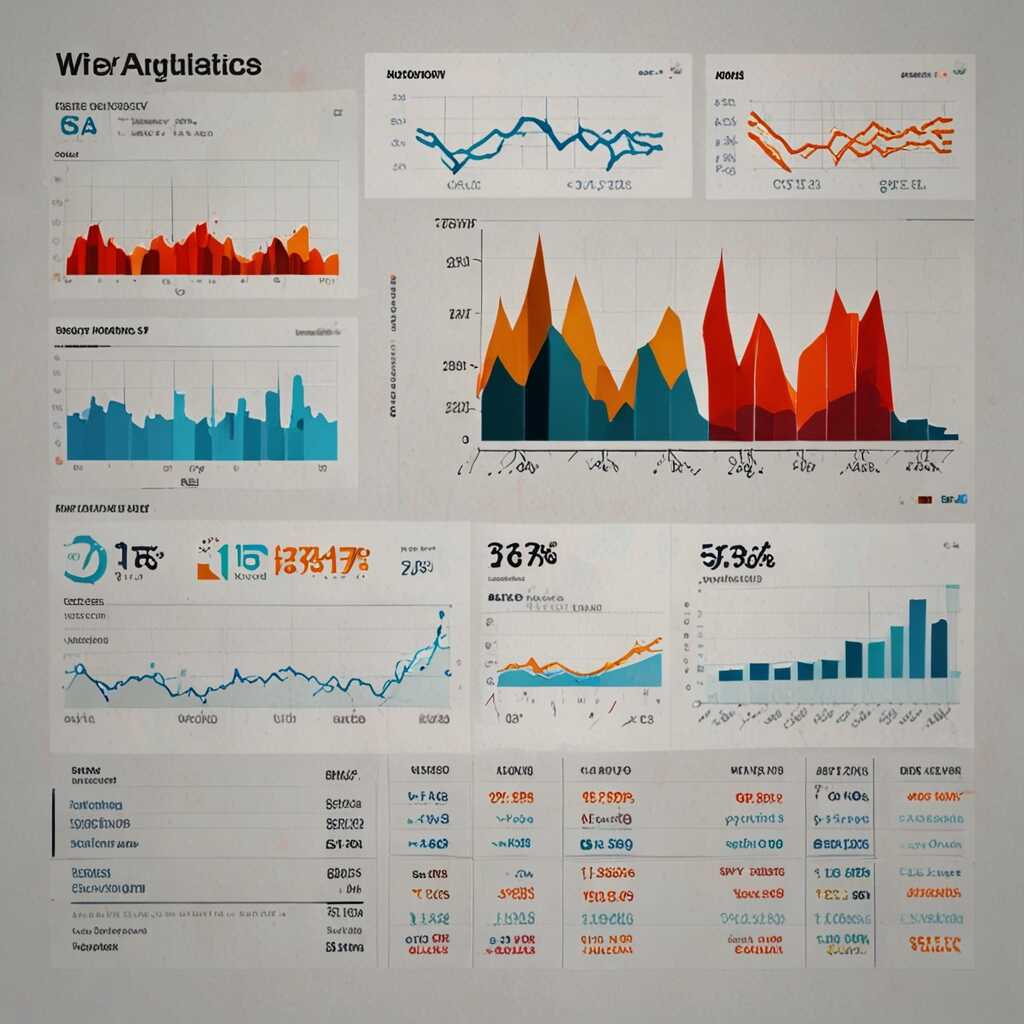Understanding how image search algorithms evaluate relevance and quality in visual content is essential for modern SEO strategies. These algorithms analyze various factors to determine what images best meet user queries and needs. At Metrics Rule, we leverage our technical expertise to help clients optimize their visual content for better performance in search results. By exploring image relevance and quality, we empower SEO professionals and digital marketers to create content that resonates with both search engines and users.
Exploring the Basics of Image Search Algorithms in SEO
Image search algorithms are designed to assess visual content for relevance and quality. They analyze various factors, including metadata, image tags, and visual features. In 2023, it’s estimated that around 30% of search queries are related to visuals, making understanding these algorithms crucial for effective visual content optimization. For SEO professionals, knowing how these algorithms work can enhance content strategies and improve search rankings. Factors like image attributes and context significantly influence how search engines interpret and display images in search results.
Key Factors Influencing Image Search Results
Several essential factors influence the performance of image search algorithms. These include file names, alt text, and captions, which should incorporate relevant keywords. Image quality is also critical; high-resolution images are more likely to be favored by algorithmic tests. Furthermore, the loading speed of a webpage plays a role in SEO rankings; faster pages enhance user experience and keep visitors engaged. Regularly optimizing images for mobile devices is becoming increasingly important as mobile usage continues to rise. By focusing on these areas, you can develop a more effective SEO strategy that includes optimized visual content and aligns with evolving search algorithms.
Key Factors That Affect Image Relevance in Search Engines
Understanding the main factors that influence image relevance in search engines is essential for effective SEO and digital marketing. Search engines evaluate images based on several critical factors, including alt text, image title, context, and surrounding text. Alt text provides a text-based description of the image, helping search engines comprehend the visual content. Attributes such as image dimensions, formats, and file size also play significant roles in evaluation. Images that are optimized in terms of speed and load time tend to rank better, as they enhance site performance and user experience. By focusing on image relevance factors, digital marketers can strategically align their visuals with search engine expectations, improving visibility.
Essential Attributes for Image Optimization
To optimize images effectively, several essential attributes should be prioritized. Alt text is crucial as it describes the image to search engines and visually impaired users, improving accessibility. Additionally, using appropriate image formats, such as JPEG for photographs or PNG for graphics, can enhance image quality while ensuring efficient load times. Image file sizes should ideally be below 100 KB to ensure fast page loading, positively influencing user experience and SEO performance. Furthermore, implementing structured data such as schema markup can provide search engines with comprehensive information about the images, which further improves indexing and relevance in organic search results.

Technical Image Optimization Techniques for Better Rankings
When optimizing images for search engines, file formats play a crucial role. The best file formats for image SEO include JPEG for photographs, PNG for graphics, and SVG for vector images. Each format offers unique qualities, enhancing reliability, speed, and quality. Image compression techniques are essential as they help reduce file sizes without compromising quality, enabling faster load times. Additionally, using relevant image alt text improves accessibility and helps search engines understand your content better. Alt text should accurately describe the image context while incorporating target keywords.
Understanding Image Compression Techniques for SEO
Image compression techniques significantly enhance website performance and ranking potential. Lossless compression retains original quality, making it suitable for images needing high detail. In contrast, lossy compression reduces file sizes more effectively, ideal for web purposes. Using tools like TinyPNG or ImageOptim can help achieve optimal results without evident quality loss. Research shows that proper image optimization strategies can improve page load speed by 30% or more, directly impacting user experience and search ranking. E-commerce sites particularly benefit from faster loading times, ensuring customers enjoy a seamless browsing experience.
Statistical Insights into Visual Content Evaluation
- Over 90% of online experiences begin with a search engine.
- Image results account for approximately 20% of all search results.
- More than 40% of users prefer image searches for product information.
- About 75% of users trust quality visuals over text-based content.
- Images can boost engagement by 94% in social media sharing.
- Search algorithms analyze millions of images per second to determine relevance.
- Visual content with metadata ranks 50% better in search results compared to those without.

Understanding Quality Indicators Used by Image Search Algorithms
Image search algorithms evaluate content using several quality indicators. These include resolution, context, and user behavior signals. High-resolution images are essential, as they offer better clarity and user experience. Context, such as surrounding text and metadata, helps the algorithm understand the image’s relevance. User behavior signals, like click-through rates and time spent on a page, provide insight into how users interact with visual content. For example, an image with a resolution of 1920×1080 will likely rank better than a lower-resolution image due to its ability to provide a clearer visual experience.
Key Features of Quality Indicators in Image Search
Quality indicators play a crucial role in optimizing visual content for image search. The resolution must be designed to meet today’s standards; images with at least 1080p resolution dominate search results. Additionally, incorporating keywords into image file names and alt texts enhances context. These details allow search engines like Google and Bing to understand the image’s relevance better. User engagement data is also essential; images that receive high interaction rates help build credibility and reliability with search engines. When combined, these aspects improve the potential of achieving higher rankings, delivering better visibility in search results.

The Role of User Engagement in Image Search Performance
User engagement significantly influences image search rankings. As users click, share, and interact with images, search engines like Google and Bing take note. High engagement metrics, such as likes and shares, indicate that the image is relevant and appealing. Therefore, improving user engagement can enhance image rankings in search results. Strategies like optimizing images for social sharing and creating eye-catching thumbnails can boost user interaction. Additionally, using descriptive alt text and captions improves SEO performance and enhances the likelihood of users clicking on your images.
Strategies to Improve User Engagement with Images
To significantly improve user engagement with images, content creators should focus on producing high-quality visuals that attract attention. Implement features like zoom-in capabilities and video previews to enhance the user’s experience. Incorporating thematic SEO strategies, like using local and trending keywords, will help your image content reach a targeted audience. Additionally, actively promoting visuals on social media platforms increases opportunities for shares and engagement. Regularly analyzing engagement data through tools like Google Analytics can help determine which images perform best, allowing for continuous improvements in your visual content strategy.
Advantages of Understanding Visual Content Assessment
- Improved image SEO leads to higher traffic on websites.
- Understanding evaluation criteria helps create targeted visuals.
- Better alignment with user intent increases engagement rates.
- High-quality images can enhance brand trust and credibility.
- Users gain more control over optimizing their visual assets.
- It enables marketers to craft better ad campaigns visually.
- Data-driven decisions stem from knowing algorithm preferences.

Real-World Examples of Successful Image SEO Campaigns
In the realm of image SEO, companies like eBay, Pinterest, and Warby Parker have successfully enhanced their online visibility. eBay invested in this strategy by optimizing image alt text and leveraging descriptive filenames. This effort resulted in a significant increase in organic traffic, with reports of 20-30% growth in monthly visits. Pinterest utilized rich pins to display product information clearly alongside images, enhancing user engagement. As a result, they saw a 25% increase in traffic from search engines. Warby Parker improved their website’s image loading speed while ensuring high-quality visuals, which contributed to a great user experience, ultimately leading to a 15% boost in conversion rates.
Key Takeaways from Image SEO Success Stories
By examining these successful image SEO campaigns, marketers can draw essential lessons. First, optimize all images with relevant keywords in file names and alt tags. This strategy improves crawling efficiency and enhances indexing. Second, prioritize image loading speed, as quicker load times significantly impact user experience. Tools like Google PageSpeed Insights can help assess image performance. Finally, utilizing structured data enhances the reliability of image search results, providing crucial context that search engines need. These practices create a solid foundation for any effective e-commerce SEO strategy, helping businesses achieve better visibility and profitability.
Emerging Trends in Image Search Algorithm Development
The latest advancements in image search algorithms focus on how relevance evaluation and visual content optimization has evolved. Key advancements have included the integration of artificial intelligence impact and machine learning advancements. These technologies have enabled search engines like Google and Bing to assess images based on their context, user engagement, and various metadata factors, ensuring better user experience and content relevance. Modern algorithms can consider many factors—over 200 distinct ranking signals—when evaluating image quality. This comprehensive approach helps refine SEO strategies for businesses aiming to enhance their online visibility.
Effects of AI on Image Search Performance
AI has revolutionized image search algorithms by providing enhanced data insights that improve search performance. Machine learning models can analyze patterns in user behavior and search queries, leading to more relevant results tailored to user intent. This technology assesses images’ technical specifications, such as resolution and load speed, in combination with visual content optimization. For example, an e-commerce site can utilize AI tools to automate image tagging, thereby improving crawling and indexing. By implementing these strategies, businesses can achieve notable improvements in search rankings and lead generation.
Key Players and Their Visual Search Strategies
- Google offers robust image recognition tools but may prioritize ads over organic results.
- Bing emphasizes image context but lacks the same volume of indexed images as Google.
- Pinterest is popular for DIY and creatives, focusing on visual inspiration and recommendations.
- Shutterstock provides high-quality imagery for commercial use but can be costly for small users.
- Unsplash serves a community and offers free high-resolution images for immediate use.
- Adobe Stock appeals to professionals by providing rich editing features bundled with images.
- Flickr engages hobbyists but struggles with professional-grade search functionality.
Summarizing Strategies for Enhanced Image Relevance and Quality
To optimize image relevance in SEO, employ several key strategies. Begin with effective image optimization strategies, including using descriptive file names and ALT text. These features help search engines understand your content better. Use tools like Google Analytics and Bing Webmaster Tools to monitor how your images perform. Ensuring the visual content quality is vital; utilize high-resolution images while keeping file sizes manageable for faster loading. Finally, remember to include essential elements in a well-optimized image file, such as proper dimensions, file format, and relevant metadata. This holistic approach can dramatically enhance your SEO efforts.
Best Practices for Image Optimization in SEO
Implementing best practices for image optimization is crucial for improving SEO results. Begin by using AI tools for keyword research and ensure your images align with user intent. Optimize images by utilizing appropriate dimensions and compressed formats; this preserves quality while enhancing loading speed. Incorporate structured data to facilitate better indexing and crawling by search engines. Regularly review analytics to assess performance and make data-driven adjustments. Adopting these tactics not only improves user experience but also boosts your site’s visibility in search engine results, making your visual content more effective as part of your overall digital marketing strategy.
